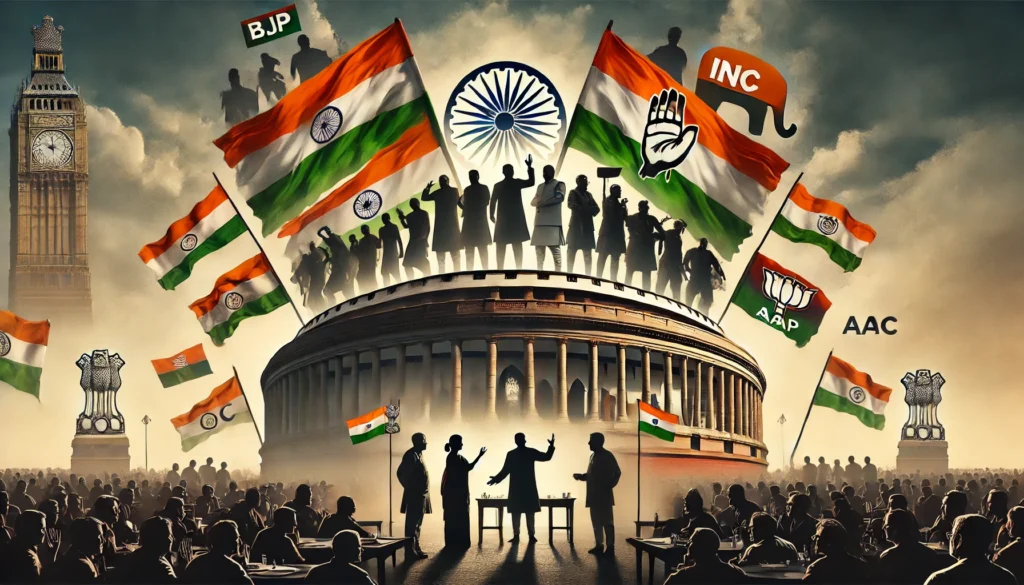
India’s political landscape is undergoing significant transformations as internal dynamics reshape governance, party alliances, and policymaking. With major elections on the horizon and regional parties gaining influence, the political tug-of-war within factions is setting the stage for an unpredictable future. These changes could significantly affect governance and the country’s direction.
Key Drivers of Change in India’s Political Landscape
1. The Rise of Regional Parties
Regional parties like the Trinamool Congress (TMC) and Aam Aadmi Party (AAP) have gained ground, challenging the dominance of national parties. This reflects the growing demand for localized representation that addresses specific state or regional concerns. Their strong performances in state elections indicate a shift in voter sentiment, forcing larger parties to recalibrate strategies in an increasingly fragmented environment.
2. Factionalism within Major Parties
Internal conflicts within major political entities like the Bharatiya Janata Party (BJP) and the Indian National Congress (INC) are becoming more evident. Leadership struggles, ideological rifts, and policy disagreements have led to the emergence of splinter groups. These divisions weaken the unity and effectiveness of these parties, further highlighting that India’s political future may no longer be shaped solely by national players.
3. Influence of Youth and Social Media

The growing political engagement of younger generations and the rise of digital activism are reshaping political discourse. Social media platforms serve as critical spaces for expressing opinions, challenging leadership, and demanding accountability. This digital revolution is raising the bar for transparency and responsiveness, adding a new layer to political dynamics.
Case Study: The Maharashtra Political Crisis
The Maharashtra political crisis exemplifies how internal conflicts can disrupt governance. Shifting alliances and defections within the state legislature exposed the fragility of political coalitions, with broader implications for governance strategies and stability. This incident underscores the unpredictable nature of India’s political landscape.
Implications for Governance
1. Policy Stalemates
Factionalism often leads to legislative delays and governance paralysis. Without cohesive leadership, critical reforms stall, leaving pressing issues unresolved. This undermines governance efficacy and frustrates citizens.
2. Rise of Coalition Governments
The growing clout of regional parties suggests a shift toward coalition governments. While coalitions can enhance inclusivity, they also demand compromise, leading to less decisive leadership. Managing alliances becomes a delicate balancing act, complicating governance.
3. Declining Public Trust
Frequent infighting erodes public trust in political institutions. Persistent strife within parties can disillusion voters, leading to disengagement and reduced electoral participation.
The Way Forward: Strengthening Governance Amid Challenges

To address these issues, India must prioritize intra-party democracy, strengthen leadership, and focus on grassroots concerns. Promoting unity, transparency, and accountability within political parties is essential for restoring public trust and ensuring stability. Addressing factionalism requires proactive efforts to build cohesive strategies and align leadership with public needs.
Conclusion: Navigating an Uncertain Political Future
The evolving political dynamics in India present challenges and opportunities. The growing influence of regional parties, internal rifts in major factions, and youth-driven digital activism mark a significant transformation. As the country approaches pivotal elections, strong and transparent governance is imperative. By addressing internal conflicts and fostering unity, India can ensure its political future remains stable and responsive to the diverse needs of its citizens.




